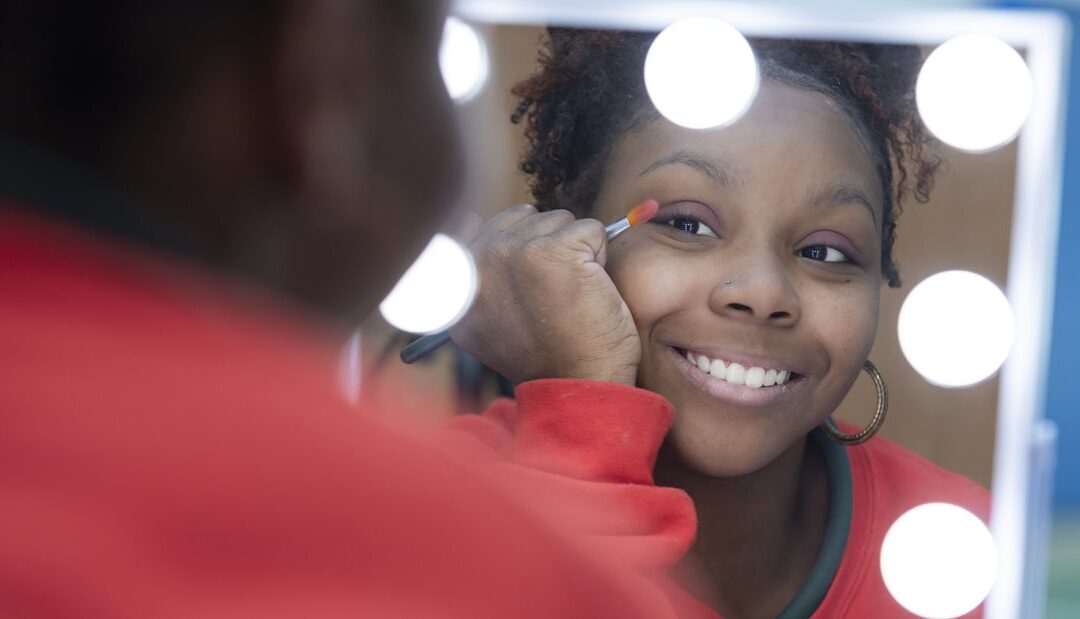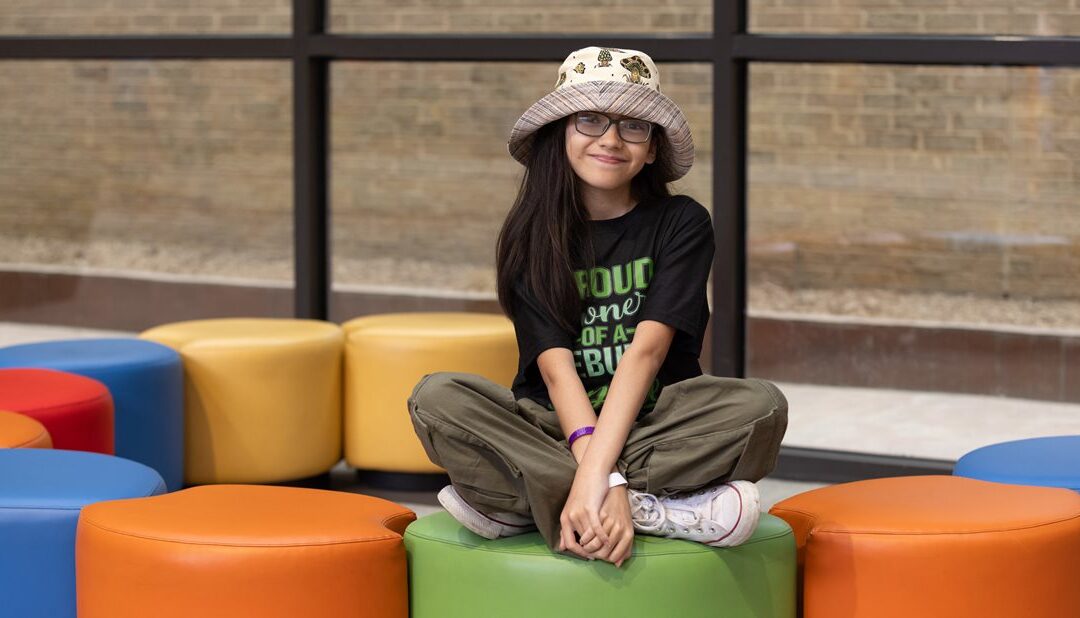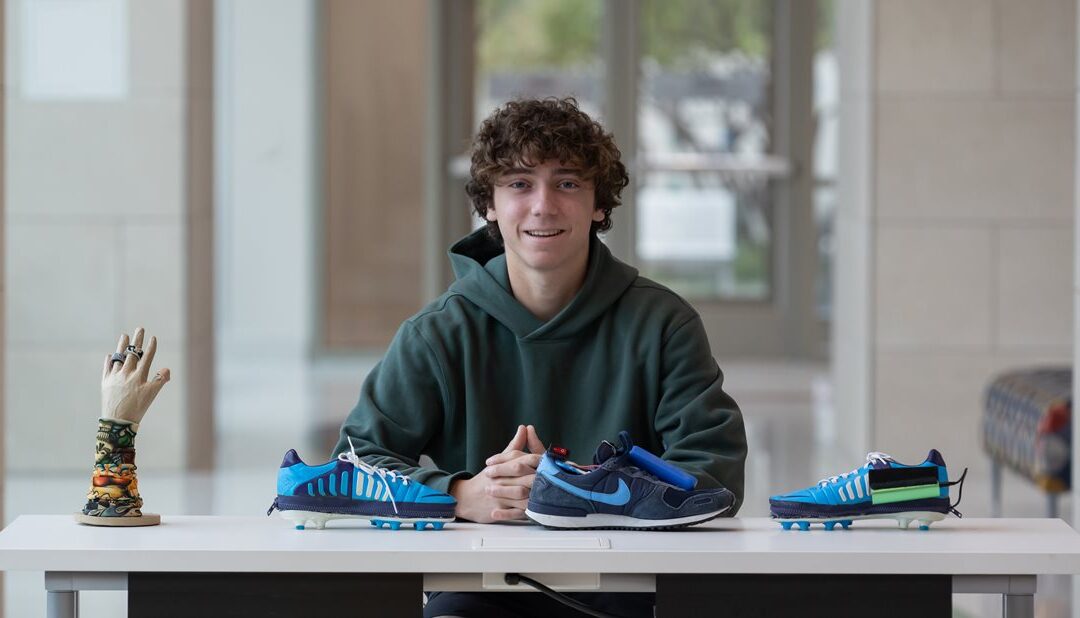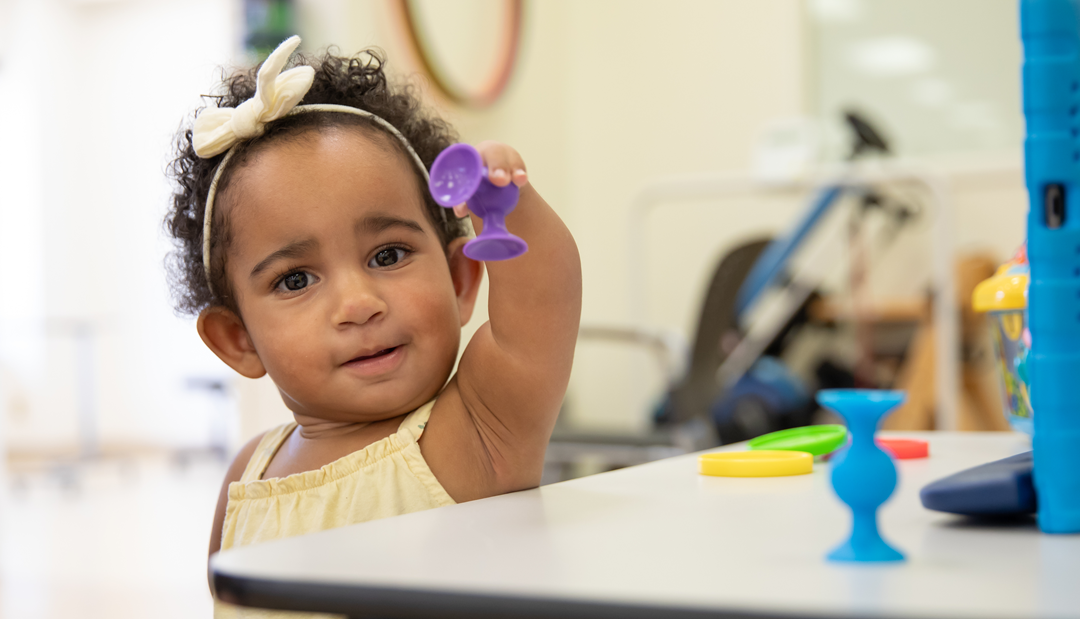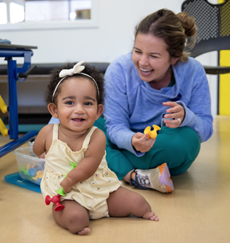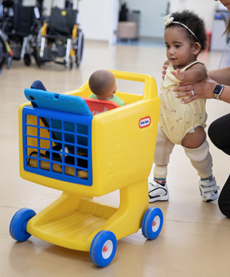
A Fab Collab With By Way of Dallas – Building Connection by Changing the Conversation
Cover story previously published in Rite Up, 2024 – Issue 2.
by Kristi Shewmaker
Hance Taplin is a connector. In 2011, he founded By Way of Dallas to connect both sides of U.S. Highway 75 through conversation sparked by streetwear that he creates. “I use the apparel as a vehicle,” Hance says. “When we do popups, my goal is to see a Highland Park mom converse with a South Dallas high school football player while waiting in line for the same product — two different people, celebrating Dallas.” His mission is to bring people together, despite their differences, by giving them something to talk about. And now, he is doing it at Scottish Rite for Children.
Last fall, By Way of Dallas and Scottish Rite joined forces to launch a movement about movement, where fashion meets function. For decades, Scottish Rite has created custom, state-of-the-art prostheses for children of all ages, and now, they bear artwork designed by By Way of Dallas artists, athletes and influencers. The list includes Dallas Cowboys quarterback Dak Prescott and photographer Jeremiah Jhass, Dwight Powell of the Dallas Mavericks, artist Temi Coker, and sports and comedy group Dude Perfect to name a few.
“Instead of the narrative being, ‘That’s Johnny who has a prosthetic leg.’ I want it to be, ‘Yo! Did you see Johnny’s leg? It’s so cool!’” Hance says. “Now, the conversation is changing.” Instead of differences separating people, whether that be through age, race or disability, Hance and his crew are creating art that builds connection and community.
“We all have our own prostheses within us,” Hance says, “but through art, we can connect and understand that we’re just like each other. Through this collaboration, we can show people how art and community and culture and innovative design can converge and really make a difference.”
Now, patients at Scottish Rite for Children who need a prosthesis can choose a By Way of Dallas design that speaks to them. Owen, Elena and Miles are a few of the first to sport their designs and start their own conversations.
Owen
“Owen has always been a social butterfly,” Amanda says about her 17-month-old son. “He is very active and loves crawling around and climbing up onto everything. We have fun seeing how he adapts and does things his own way.”
Amanda learned about Scottish Rite’s collaboration with By Way of Dallas through a post on Instagram. The collaboration launched shortly before Owen underwent amputation surgery on his right leg.
“At my 20-week prenatal anatomy scan, my doctor said that they couldn’t find Owen’s foot,” Amanda says. Later, a maternal fetal medicine doctor saw it but noticed that it was severely curved upward. It was not until Owen was born and referred to Scottish Rite for Children that he was diagnosed with tibial hemimelia, a condition in which a child is born with no tibia or one that is too short. Owen’s tibia was short, and he did not have a functioning ankle joint. In his case, the choice was to amputate or undergo many reconstructive surgeries throughout his life that may not have led to mobility.

“We wanted Owen to have every opportunity to run, jump, play, try different sports, dance — whatever interest he may develop,” Amanda says.
“It was difficult to get the diagnosis but a relief to have a clear path forward. Knowing that we were in one of the best places in the country to have to go through this, immensely added to our relief.”

A few months after surgery, Owen received a prosthetic leg with Hance Taplin’s design. Amanda was drawn to the pattern and bold colors. “I chose it because my husband was born and raised in Dallas,” she says. “It was a beautiful way to memorialize the landmarks, and it’s a cool testament to being in Dallas.”
She explained that she used to work for a British fabric company where they collaborated with brands who used their fabrics. “When I saw what By Way of Dallas was doing for these kids — taking the device and turning it into a conversation piece, but not about their disability, but about the artwork — I thought it was amazing,” she says. “I was excited that Owen’s first prosthesis would have this cool story behind it.”
Today, Owen is learning how to use his prosthesis. He stood up on his own for the first time. “We love showing off his tiny prosthetic leg,” Amanda says. “Rather than, ‘Oh my God, what happened to you?’ I want him to feel seen. The collaboration with By Way of Dallas is meaningful to us because Owen will be seen for something other than his limb difference.”
Elena
P-R-O-S-T-H-E-S-I-S. Prosthesis is a big word to spell on the board of an elementary school classroom, but that is exactly what Elena and her mother, Brittany, did the first week of school each year. “We talked about Elena’s prosthetic leg and gave the children an opportunity to ask questions,” Brittany says. “After answering their questions, the kids moved on. Then, she was just Elena.”
A 12-year-old sixth grader from Temple, Elena loves to play brain games, like sudoku, and basketball in the backyard. Recently, she tried out and made the seventh grade cheerleading squad. “We’ve already started practicing after school,” she says.
Since age 3, Elena has had more than a dozen prosthetic legs as she has grown. “When we adopted her, her leg was locked at a 90 degree angle,” Brittany says. “We assumed we’d get her home and straighten it out, but you can’t just straighten out a leg that’s been locked in place for two and a half years.” Through a friend, the family discovered Scottish Rite for Children. “Elena had five major surgeries and got her leg within the first year,” Brittany says. After healing from surgery, Elena underwent physical therapy to learn how to walk with her prosthesis. “All of a sudden, she was upright, off and running,” Brittany says. “It was miraculous to watch.”
Now, Elena has two prostheses — an everyday walking leg and a sport leg that she uses for cheer. Shortly after the By Way of Dallas collaboration had begun, she had outgrown her prostheses and needed new ones. After reviewing the patterns, Elena chose artist Temi Coker’s design for her everyday leg, and she let Brittany select the design for her sport leg. Brittany chose Hance Taplin’s art, and Elena approved wholeheartedly.

On delivery day, Temi came to Elena’s appointment to meet her personally. “It was cool to see the person who designed my leg,” Elena says. “I told him, ‘The design is basically me in a leg.’ It’s very colorful, with this color here, that color there and all over the place.”
Elena kept the rest of her family in suspense until she got home to make the big reveal. “I like a surprise, and my sisters were like, ‘Show me, show me, show me!’” she says. Brittany added that her friends at school were also excited to see the By Way of Dallas designs.
Like her elementary school days, Elena still gets questions about her limb difference, but Brittany says that she has grown into the ability to answer them. They agree, it is better to ask than to stare. “I don’t remember having a real leg,” Elena says. “This is how it’s been for nine years of my life, so it’s kind of normal for me. Most of the time, it’s just me — Elena.”
Miles
“Miles doesn’t know the words, ‘I can’t,’” says his mother, Angela. “He has always used the phrase, ‘I haven’t been able to yet.’”
An 11-year-old from College Station, Miles was born with symbrachydactyly, a condition that occurs when a child’s arm or hand does not fully develop. Miles is missing his left hand and forearm. His pediatrician referred the family to Scottish Rite for Children where he was diagnosed. “He was born exactly how he was supposed to be born because he has been able to teach so many people how to love other people better,” Angela says.
Miles grew up without a prosthesis, adapting in his own way to a life full of activities. He likes to draw and solve the Rubik’s cube. He finished his first season of basketball, and he loves swinging from the monkey bars at a ninja warrior gym. But, he wanted to achieve a move called the lache, where you swing from one bar, which is further than the length of your body, to reach the next bar. “He didn’t have the extra wingspan to hook his arm on the bar,” Angela says. “After trying for years, he was like, ‘I need something to help me reach that bar.’”

Cue prosthetist Dwight Putnam, who was delighted to not only build Miles’ first prosthetic arm but also to fit him with a customized hand attachment that could grasp the bar, making the lache a reality. When it came time to select a pattern, Dwight noticed that Miles was wearing a Dude Perfect hat and showed him their By Way of Dallas design. “The only YouTube video group Miles watches and is obsessed with is Dude Perfect,” Angela says. “The pattern was meant for him.”

At Miles’ next appointment, Dude Perfect walked into the room and presented the arm. “I was very surprised and extremely happy,” he says. Angela said that he was so proud, he wore it to school the next day, walking with a little extra swagger. In response to his new arm, Miles says, “A lot of people ask where I got it, say it’s really cool and try to figure out a way to try it on.”
Recently, Miles competed on FOX’s MasterChef Junior, which gave him the opportunity to combine two more passions — cooking and advocating for children with limb differences. “It means so much that I get to represent kids with limb differences, that they get to see someone like them,” Miles says. “But, I think it’s actually more important for people not like us, because we know what we can do. It’s everyone else that doubts us and tells us we can’t. I hope I’m able to show kids and everyone watching that their limb difference doesn’t have to limit them from doing really big and amazing things!”

Learn more about the By Way of Dallas Collaboration.

